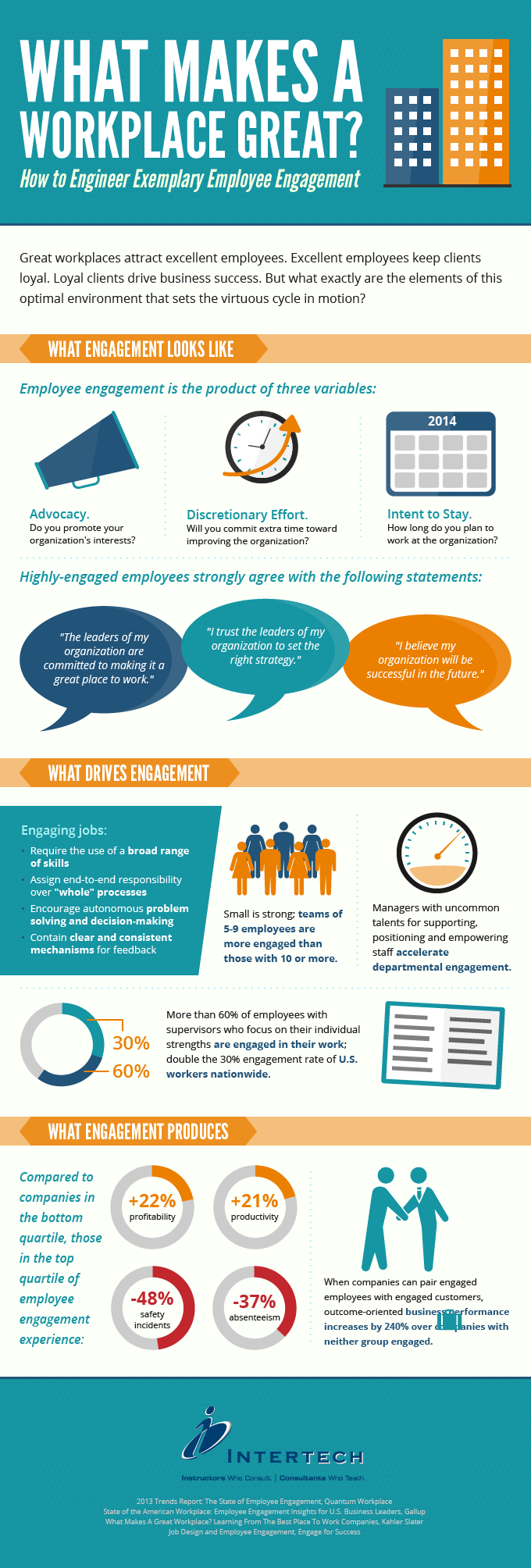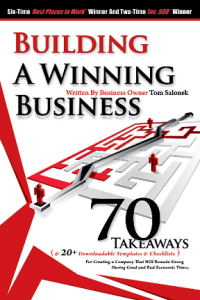19 Ways to Get a Promotion
Over the past few years, I’ve been asked by a friend, family member or business associate, to meet with their kid or friend who’s looking to land a job or get a promotion. Below are my 19 tips:
- Do what you say. Finish what you start. Be on time. Say please and thank you. Be friendly. Smile. While a lot more is needed to have success in a job, it’s rare to consistently miss one of these and zoom your way to the top.
- Over perform. It’s said that a person behaves as though they’re in the position above them before they get the promotion. If you’re not sure of the job standard or what’s expected, ask.
- Proactively help. There are a lot of moving parts in an organization. Those that step up and create solutions for problems without being asked, get noticed.
- When help’s requested, do so. When opportunities arise to help on something outside of your current role, do it.
- Put the firm first. When it comes to decisions that could “go either way” – in favor of you or in favor of the firm – err on the side of the firm. If you’re in a responsible organization and they see you doing this, they’ll probably offer up what you wanted in the end. Don’t work the edges, live in the grey area, or shirk responsibilities.
- Care. When it comes to events in the lives of your co-workers or team members, show interest. If they’re having issues, demonstrate your care and offer support and help. Be there for the big events. The former mayor of New York, Rudy Giuliani, said, in response to attending events of his employees “Weddings are optional. Funerals are mandatory.”
- Promote your firm. This ranges from saying good things about your firm up to speaking or writing on behalf of your firm.
- When navigating your firm, if you need cooperation on something, ask for support before you go public. People want to follow thru on commitments. In 1987, a social scientist named Anthony Greenwald asked voters on election-day eve if they’d vote. 100% said yes. On election day, 86.7% of those asked went to the polls compared to 61.5% of those in the “control group” who were not asked.
- Get people to like you. While some say this doesn’t matter. It does. Author and social scientist Robert Cialdini, said, “People prefer to say ‘yes’ to those they know and like,” People are also more likely to favor those who are similar to themselves or give them compliments. In 2005, Randy Garner mailed out surveys to strangers with a request to return them. The request was signed by a person whose name was either similar or dissimilar to the recipient’s. For example, Robert James might receive a survey request from the similarly-named Bob Ames. According to a study reported in Yes!, “Those who received the survey from someone with a similar-sounding name were nearly twice as likely to fill out and return the packet as those who received the surveys from dissimilar sounding names (56% compared to 30%).”
- If you want to be in leadership, know the basics of what leadership means. Dale Carnegie does a great job making this tangible. According to Carnegie, leaders:
- Define a vision
- Build understanding of the vision throughout the team
- Create strategies and work plans to accomplish the vision
- Align the goals of individuals to execute the strategies and work plans
- Delegate and define performance standards
- Hold team members accountable to standards
- Plan
- Communicate
- Praise team members
- Gain cooperation
- Solve problems
- Take sensible risks
- Help grow the skills of team members
- Celebrate success
- Author Jim Collins shared that great leaders “Look in a mirror when there’s a problem and look out a window when there’s success.” Give praise. Congratulate and thank in writing. When someone’s had success, ask them how they did it. They can relive their glory for a few minutes.
- Shoot for a career not a job. Know your business, your industry, and your profession. When it comes to your firm, know the stock price, leadership changes, new products, and news. When it comes to your industry and profession, read, understand trends, stay current.
- Act the way you want others to act. Attitudes are contagious. People cannot control your emotions – only you can. If you are upset and not sure if you should say something – don’t. Rarely will people think you acted unprofessionally if you say little or nothing. Don’t accept a “gift” of anger. In line with controlling your emotions, don’t respond in kind when someone is angry. By not accepting their gift of anger – it remains with them.
- Think and speak solutions. If the focus is on me, my hurt feelings, what happened in the past, gossip etc., time ticks away as laundry lists of bad feelings build and emotions boil. Meanwhile, the solution is still waiting to be discovered. Engage in direct communication. Venting to a third party doesn’t change any situation and can disrupt office harmony. Address concerns, criticisms and wants to the appropriate members (those who have the power to make changes to policy or guidelines) of the company. Use I statements. I statements make our thoughts clear to our listeners. You statements imply blame. Don’t take it upon yourself to represent the concerns of coworkers. Each employee is responsible for stating his/her own concerns and suggestions.
- Lead up… When you bring your manager a question or a problem, bring along a few possible solutions. Be ready to tell your manager which solution you think is best and why. Don’t use the manager’s time to think through the problem if this is something you could do beforehand. Prepare your manager for bad news early. This allows your manager time to help you, defend you, or prepare other parties for what is to come. Take blame. This shows your character in the fires of a crisis. Skip the sackcloth, ashes and flogging. Once you’ve owned and defined the problem, cut to the quick in finding a solution.
- If issues arise, seek to understand before you seek to be understood.
- Act with character, be committed and divide and conquer. Adversity tests character and shows others how we are “wired” at our core. Our leadership and the customer will reward and remember behaving with character and being committed to solving the customer’s problem. “I don’t know” is okay, especially when teamed with “I’ll find out.” This is much safer than bluffing. It shows you are honest and you are not panicking in the face of a challenge. If you follow up with an answer quickly, it shows you are responsive.
- Know how we’re wired as people. “You never get a second chance to make a first impression” isn’t correct. Customers remember the finish of the service engagement more than the start. Finish strong. If you have bad news, give a choice. Giving a choice, even if it’s between two bad scenarios, makes them feel like they have some control. Having control in a situation creates less stress. Extend Wins, Cut Losses. In a study, participants were given a choice. They could win $5 twice or win $10 once. They choice to win $5 twice. In this same study, participants were given a choice to lose $5 twice or lose $10 once. They chose to lose $10 once. When dealing with customers, give them multiple reasons to be happy. If you have bad news, it’s better to unveil it all at once.
- Negotiate well…. more successful negotiations occur over lunch, dinner and in the hallway after hours than occur at a conference table with one side pitted against another. Reaching agreement requires trust. Trust doesn’t get built without work and understanding. Invest in the relationship and get to know the person with whom you will be working.

 ntertech was named one of
ntertech was named one of 

